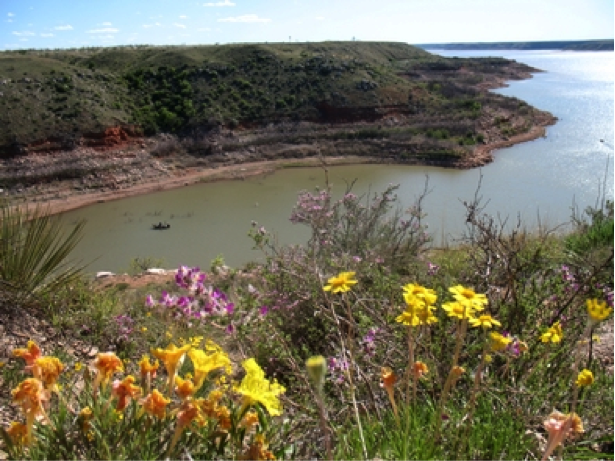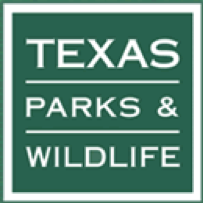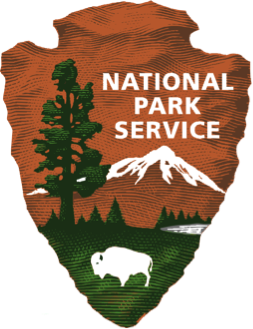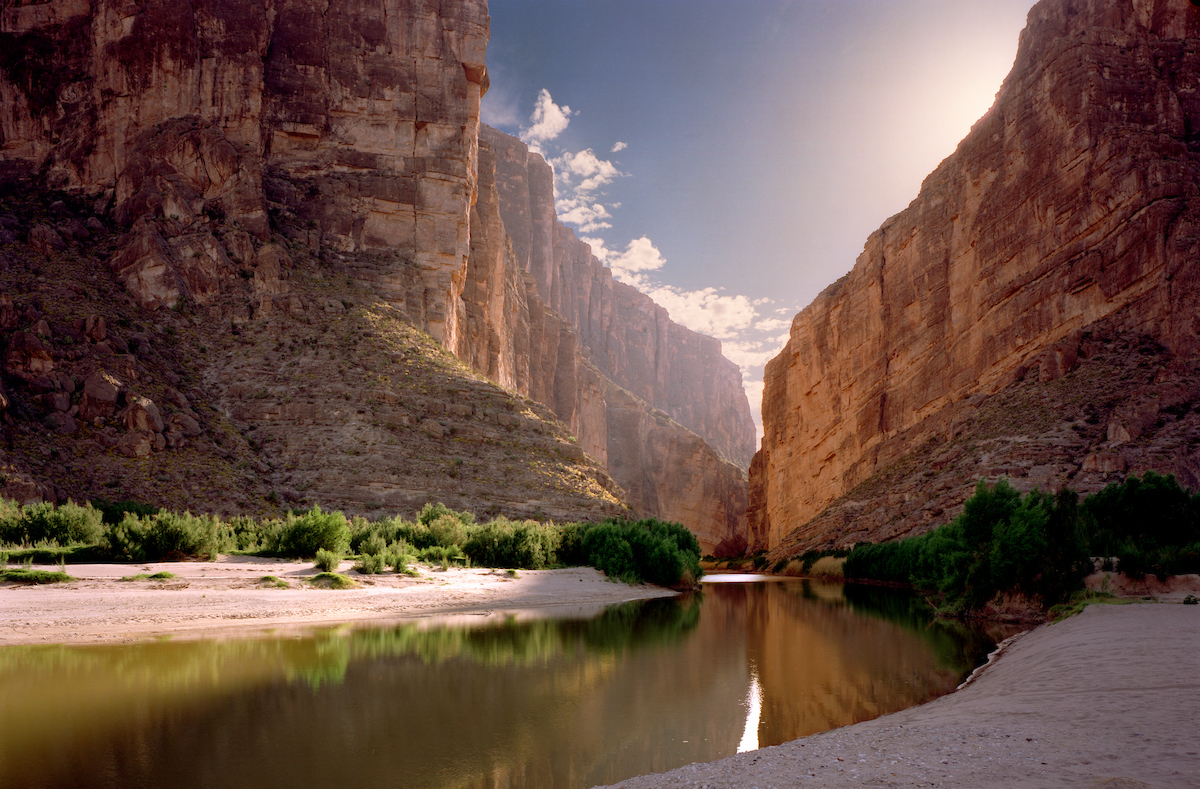If you are new to the Lone Star state, what images come to mind when you think about the Texas wilderness? Cacti and deserts likely come to mind, but Texas is much more than a desert landscape. Texas has a variety of unique and special ecosystems, such as the wetlands of East Texas. Martin Dies Jr. State Park boasts wetlands species such as alligators as well as species more commonly found in the deserts like roadrunners. The Texas Parks and Wildlife Department is tasked with managing and conserving many of the extraordinary places found in Texas. Yet, these special ecosystems are threatened by increasing human development, and decreasing conservation funding.
Meet your state parks today!

Lake Meredith National Recreation Area Credit: Recreation.gov
What parks and wildlife areas are in Texas? Why are they important?
Texas Parks and Wildlife Department’s mission is “to manage and conserve the natural and cultural resources of Texas and to provide hunting, fishing, and outdoor recreation opportunities for the use and enjoyment of present and future generations.” This includes the care and maintenance of 95 Texas state parks across eight regions, as well as State Natural Areas and 714,094 acres of Wildlife Management Areas (WMA).


Credit: Texas Parks and Wildlife Credit: National Park Service
There are also 16 areas in Texas that are managed by the National Park Service:
-
Alibates Flint Quarries National Monument (Fritch)
-
Amistad National Recreation Area (Del Rio)
-
Big Thicket National Preserve (Beaumont)
-
Big Bend National Park
-
Chamizal National Memorial (El Paso)
-
El Camino Real de los Tejas National Historic Trail (LA and TX)
-
El Camino Real de Tierra Adento National Historic Trail (NM and TX)
-
Fort Davis National Historic Site
-
Guadalupe Mountains National Park (Salt Flat)
-
Lake Meredith National Recreation Area (Fritch)
-
Lyndon B Johnson National Historic Park (Johnson City)
-
Padre Island National Seashore (Corpus Christi)
-
Palo Alto Battlefield National Historical Park (Brownsville)
-
Rio Grande Wild and Scenic River
-
San Antonio Missions National Historical Park (San Antonio)
-
Waco Mammoth National Monument (Waco)
Why are parks and protected wildlife areas important? Parks, forests, WMAs, and other natural areas are important environmental, recreational, cultural and economic resources for the Lone Star State. The Texas Parks and Wildlife Department protects estuaries, fragile, yet important ecosystems that are a source of food for migrating birds, breeding habitat for shrimp and fish as well as natural filter for water contaminants. Estuaries are also some of the most productive ecosystems in the world. Estuaries are usually found where rivers meet the sea or other body of water, such as a lake. Most estuaries are made up of a mixture of freshwater and saltwater and thus the species that call estuaries home are uniquely adapted to this environment. Freshwater inflows are responsible for maintaining the proper salinity in estuaries. Optimal salinity levels are important for the health of coastal ecosystems. Salinity is especially important for juvenile shrimp and fish. Freshwater inflows also flush pollutants from coastal ecosystems, preventing their build-up to harmful levels.
These protected areas are also refuges for more than 200 endangered species. TPWD lists 214 threatened and endangered species on the lands that they manage. In addition, Park Service lands are home to 23 threatened and endangered species. Five species of interest are:
-
Mexican tree frog (Image) Credit: Vladlen Henríquez
-
Attwater’s greater prairie chicken (Image) Credit: Lavendowski George, USFWS
-
Atlantic spotted dolphin (Image) Credit: NOAA Southeast Fisheries Science Center
-
Kemp’s ridley sea turtle (Image) Credit: National Park Service
-
Ocelot (Image) Credit: Eric Kilby
Protected areas, such as state parks, are also important recreation destinations. Ecotourism is both an environmentally and economically important form of recreation. Ecotourism provides an opportunity for people to explore nature by birdwatching, fishing, hiking, and other outdoor activities. Other recreational activities found in state parks are: biking, camping, boating, kayaking, canoeing, horseback riding, swimming, and hunting. The more opportunities people have to enjoy nature, the more they are likely to want to see it protected. The National Park Service reports more than five million visitors to national parks in Texas and $288,500,000 in economic benefits from Texas National Park tourism in 2016. In 2001, the total economic impact of fish and wildlife related recreation was estimated to be valued at $10.9 billion. Ecotourism is good for Texas’ economy.
In addition to maintaining recreational facilities, TPWD also sponsors nine programs that advocate the idea that “life’s better outside.”
-
Texas Outdoor Family Program - workshops teaching families how to camp at state parks across Texas
-
Free Fishing at State Parks and Wildlife Management Areas - fish for free in Texas state parks
-
Texas State Parks Geocache Challenge - search for geocaches in more than 90 state parks, historic sites, and natural areas while learning more about these areas
-
Junior Ranger Youth Explorer Program - help children learn about nature and “discover that life’s better outside”
-
Arts in the Parks - let your creativity be inspired by Texas State Parks
-
Texas Buffalo Soldiers - discover the history of the first African American service regiments during peacetime in Texas
-
Civilian Conservation Corps (CCC) Legacy Parks - TPWD works to preserve the legacy of the 29 parks built by the CCC as part of President Franklin D. Roosevelt’s New Deal
-
Texas State Parks Ambassador Program - partnerships between young adult volunteers and Texas State Parks to raise awareness and give back to the parks
-
Dark Skies Program - a partnership between TPWD, the McDonald Observatory, the International Dark Sky Association, and local astronomy groups to promote stargazing and protect the night skies from light pollution
Additional benefits of parks and natural areas include decreased stress and stress-related problems such as inflammation disorders and reduced mental energy/sharpness, improved mental health, and improvement in children’s overall health.
What issues are affecting Texas Parks and Wildlife lands and National Parks? How do these issues affect Texas?
Pipelines and Oil and Gas Development
Approximately 20 state parks and 11 WMAs have active oil and gas leasing operations. Below are a few of the parks and wildlife areas that have been leased for oil and gas development.
-
Unspecified TPWD (Starr and Anderson counties)
-
Texas State Railroad State Historic Park
The Board for Lease within the General Land Office and Texas Parks and Wildlife departments is responsible for approving leases on state managed land. In addition to oil and gas leasing, pipelines carrying oil and gas product also run through Texas state parks. The Texas Parks and Wildlife Commission is responsible for granting easements for the pipelines. Yet, despite all of this development, TPWD estimates that they only own about 40% of the mineral rights for the land they manage. Also, oil and gas leasing and production in state parks and wildlife areas is only expected to generate $3.25 million per year. That is only 2% of the $180 million in revenue collected for Parks and Wildlife by user fees and sources of revenue.
The U.S. Bureau of Land Management (BLM) also leases land for oil and gas development. Any land where the mineral rights are held by the federal government can be auctioned off for oil and gas development. This includes national parks, monuments, and preserves. Subscribe to our newsletter (see sidebar above) to stay up-to-date on oil and gas in parks and wildlife areas.
Budget Cuts and the Border Wall
Texas Parks and Wildlife as well as the National Parks Service both need adequate government funding to properly manage parks and wildlife areas.
President Trump’s plans for a grand wall along the U.S.- Mexico border also threatens natural areas. Big Bend National Park has become a candidate for the border wall because it is one of the few sections of public land along the Texas section of the border. A wall through Big Bend would destroy the scenic beauty of the park, threaten wildlife, and potentially contribute to flooding problems along the Rio Grande River.

Credit: Al Braden
What needs to be done? Are there any barriers?
Oil and gas development needs to be limited and restricted on TPWD and other public lands. New leases should be discouraged, and when granted a strict Surface Use Agreement, should be negotiated to prevent damage to the natural landscape. Existing contracts should be phased out as they expire. Other areas of revenue should be explored to make up for any potential funding gaps.
Texas Parks and Wildlife, the General Land Office, and the Texas Legislature should increase oversight of current oil and gas activities as well as activities around state parks to ensure compliance to best practices. Minimizing the oil and gas industry’s impact on state managed natural areas is an important part of keeping them safe for current and future enjoyment.